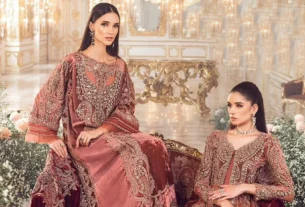Fashion has always been more than fabric and thread. It’s identity, culture, expression. Yet somewhere along the way, our relationship with clothing fractured. What was once a craft of care and connection became a relentless cycle of disposable trends, environmental devastation, and human exploitation. The average person now buys 60% more clothing than 15 years ago, keeping each item half as long. Behind these statistics lies a quiet crisis: closets overflowing with garments we barely wear, landfills choking with textile waste, and garment workers toiling in unsafe conditions for poverty wages. But a counter-movement is gaining strength—one that asks us to slow down, look closer, and rediscover the profound meaning woven into our clothes. This isn’t about rejecting style; it’s about reclaiming it.
The True Cost of Fast Fashion
The allure of fast fashion is undeniable. A $5 t-shirt, $20 jeans, runway-inspired pieces delivered to your doorstep in days. It democratized trends, made style accessible. Yet this accessibility masks staggering hidden costs. Environmentally, the industry is a catastrophe: responsible for 10% of global carbon emissions, second only to oil. It consumes 93 billion cubic meters of water annually—enough to meet the needs of 5 million people. A single cotton shirt requires 2,700 liters of water to produce, equivalent to one person’s drinking water for three years. Then there’s the pollution: toxic dyes poison rivers, synthetic microplastics from polyester garments infiltrate oceans and food chains.
The human toll is equally devastating. Garment workers, primarily women in Global South countries, earn as little as $3 per day, far below a living wage. Factories are often structurally unsafe—remember the 2013 Rana Plaza collapse in Bangladesh that killed 1,134 workers? These conditions persist today, hidden behind glossy marketing campaigns. Fast fashion’s business model depends on our detachment from these realities. It thrives on impulse buys, trend-chasing, and the normalization of clothing as disposable. We’ve been conditioned to see a $10 dress not as a product of human labor and natural resources, but as a temporary thrill.
The Slow Fashion Awakening
Against this backdrop, slow fashion emerges not as a trend, but as a philosophy. It’s a return to intentionality, quality, and respect—for the makers, the materials, and the wearers. At its core, slow fashion asks three questions: Who made my clothes? What are they made from? And will I love and care for them for years to come?
This movement manifests in powerful ways. Eileen Fisher’s Renew program takes back worn garments, mending them or reselling them at lower prices. Since 2009, they’ve diverted over 1.8 million pieces from landfills. Patagonia’s Worn Wear initiative celebrates the stories of well-loved gear, offering repairs and encouraging customers to buy only what they need. These aren’t charity projects; they’re viable business models proving that sustainability and profitability can coexist.
Independent designers are leading the charge too. Mara Hoffman uses deadstock fabrics (leftover materials from larger manufacturers) and organic fibers, creating vibrant, timeless pieces. Veja sneakers transform recycled plastic bottles into stylish footwear, ensuring fair wages for factory workers in Brazil. These brands prioritize transparency, publishing supply chain details and wage structures. They prove that ethical production isn’t a limitation—it’s a catalyst for innovation.
The Pillars of a Mindful Wardrobe
Building a sustainable wardrobe isn’t about deprivation. It’s about shifting focus from quantity to quality, from fleeting trends to enduring style. Here’s how:
1. Quality Over Quantity: Invest in fewer, better pieces. A well-made wool coat might cost $300 but last decades, while a $50 synthetic version pills and loses shape after one season. Look for natural fibers (organic cotton, linen, hemp, Tencel) that age gracefully. Check construction: reinforced seams, sturdy buttons, aligned patterns. These details signal craftsmanship.
2. Timeless Design: Trends cycle faster than ever. Slow fashion embraces silhouettes and colors that transcend seasons. A classic trench coat, a tailored blazer, a simple white shirt—these form the foundation of a versatile wardrobe. When you do buy trends, opt for accessories (scarves, bags) rather than entire outfits.
3. Second-Hand First: The most sustainable garment is one that already exists. Thrifting isn’t just frugal; it’s an act of environmental stewardship. Platforms like Depop, ThredUp, and Vestiaire Collective make pre-loved fashion accessible. Vintage stores offer unique pieces with history. Each second-hand purchase saves resources and reduces demand for new production.
4. Care and Repair: Extending a garment’s life is radical in a disposable culture. Learn basic mending: sewing on a button, darning a sock, patching jeans. Many communities host repair cafes where volunteers fix clothes for free. Brands like Nudie Jeans offer free repairs for life, reinforcing that their products are meant to endure. Proper care matters too: washing clothes in cold water, air-drying when possible, and avoiding over-washing preserves fibers and saves energy.
5. Ethical Transparency: Demand better from brands. Use tools like Good On You, an app that rates brands on environmental impact, labor practices, and animal welfare. Support companies with certifications like Fair Trade, B Corp, or Global Organic Textile Standard (GOTS). When transparency is lacking, ask questions. Consumer pressure forces change.
The Cultural Shift: From Consumer to Curator
Embracing slow fashion requires unlearning decades of marketing messaging. It means rejecting the idea that our worth is tied to constantly updating our closets. Instead, it invites us to become curators of our personal style—to build wardrobes that reflect our values, not just the latest trend.
This shift is gaining momentum. The 30 Wears Challenge, started by eco-designer Livia Firth, asks consumers to commit to wearing a new item at least 30 times. It’s a simple litmus test: Will I truly love and use this? The Capsule Wardrobe movement, popularized by bloggers like Courtney Carver, focuses on minimal, versatile collections (typically 30-40 pieces) that mix and match effortlessly. Both approaches emphasize intentionality over impulse.
Social media, once a driver of fast fashion, is now amplifying slow alternatives. Hashtags like #SlowFashion, #WhoMadeMyClothes, and #LovedClothesLast showcase personal style rooted in sustainability. Influencers like Aja Barber and Megan McSherry use their platforms to educate about ethical consumption, proving that conscious fashion can be vibrant and inspiring.
The Joy of Connection
Perhaps the most profound aspect of slow fashion is its power to reconnect us—to our clothes, to their makers, and to our own creativity. When we know the story behind a garment—who wove the fabric, who stitched the seams—it becomes more than an object. It becomes a thread in a larger human tapestry.
Wearing slow fashion invites mindfulness. Choosing an outfit becomes an act of self-expression rather than conformity. Mending a hole in a favorite sweater fosters a sense of stewardship. Discovering a vintage piece with a history sparks imagination. These experiences stand in stark contrast to the fleeting rush of a fast-fashion haul. They offer deeper, more lasting satisfaction.
Consider the Japanese concept of wabi-sabi—finding beauty in imperfection and impermanence. A faded denim jacket, a visibly mended elbow patch, a softening linen dress—these tell stories of life lived. They carry memories of places visited, meals shared, challenges overcome. In a world of mass-produced uniformity, these personal narratives are priceless.
Moving Forward: Challenges and Hope
The path to a sustainable fashion industry isn’t without obstacles. Ethical garments often come with higher price tags, reflecting fair wages and quality materials. This raises questions of accessibility. How can we ensure slow fashion isn’t just a privilege for the wealthy? Solutions are emerging: rental services like Rent the Runway, clothing swaps, and community-supported fashion models that make quality pieces more affordable.
Systemic change is essential. Governments must enforce stricter environmental regulations and labor laws. Brands need to invest in circular business models—take-back programs, recycling technologies, and design for disassembly. As consumers, our role is to demand this change through our choices and our voices.
The momentum is undeniable. In 2023, the global sustainable fashion market was valued at $7.5 billion and is projected to reach $11.1 billion by 2027. More importantly, attitudes are shifting. A 2022 survey by McKinsey found that 66% of consumers consider sustainability when making fashion purchases, up from 57% in 2020. This isn’t a passing trend; it’s a fundamental reevaluation of our relationship with clothing.
Conclusion: Dressing with Purpose
Fashion at its best is art, culture, and identity. It should delight, empower, and express. Slow fashion doesn’t diminish these possibilities—it enhances them. By choosing quality over quantity, ethics over exploitation, and timelessness over trends, we reclaim fashion as a force for good.
Imagine a world where every garment tells a story of care: care for the planet, care for the people who made it, and care for the person who wears it. Where opening your closet brings not anxiety about what’s “out of style,” but joy in pieces that feel authentically yours. Where fashion becomes a celebration of craftsmanship, creativity, and connection.
This revolution starts quietly. It begins with one intentional purchase, one mended seam, one question asked: “Who made my clothes?” It grows as we share our journeys, support ethical brands, and redefine what it means to be stylish. In a world of disposability, choosing to dress with purpose is a radical act. It’s a declaration that what we wear matters—not just to us, but to each other and to the planet we share. The wardrobe revolution is here. Will you answer the call?


